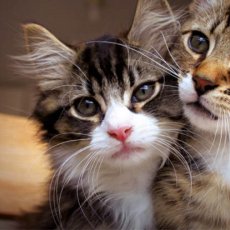Clinically proven to help you lose weight.
Join the millions of Americans that get real results with Semaglutide injections. Get evaluated by our board-certified weight loss specialist now to see if Wegovy® (semaglutide) or other weight loss treatments are a fit for you.
As of $49 First Month, medication not included
Call or text us at: (216) 478-5990
Ozempic Treatment
Ozempic is a revolutionary drug for weight loss. When combined with diet and exercise changes, it also reduces blood sugar in adults with type 2 diabetes and lowers their risk of major cardiovascular events like heart attacks and stroke, which are often fatal.
What Is Ozempic?
The Ozempic shot for weight loss is one of the brand-name versions of the medication semaglutide. In small doses, it causes your body to release more insulin, which lowers blood glucose levels. At higher doses, it also acts on the brain to reduce appetite and create a sense of fullness.
Ozempic Treatment
Looking for effective weight loss solutions?
Discover Ozempic, a brand-name form of semaglutide. If you're searching for Ozempic near you or Ozempic California services, you're in the right place.
Let’s help you understand how Ozempic weight loss can positively impact your health.
What is Ozempic?
Ozempic, known scientifically as semaglutide, is an injectable medication designed to boost insulin release and control blood sugar levels. When used in higher doses, it influences brain signals, reduces appetite, and helps you feel full sooner. If other methods haven’t worked for your weight loss journey, Ozempic may be just what you need.
Why Choose Ozempic?
Ozempic For Weight Loss in California
Searching for "ozempic weight loss clinics near you"? Consider Ozempic as a preferred choice for managing weight, especially if you’re a resident of California. This treatment offers a reliable option for dedicated weight loss efforts.
Key Dosages
- 0.25 mg/week: Start with a low dose to help your body adjust.
- 0.5 mg/week: After the initial period, you may increase the dose for better results.
- 1 mg or 2 mg/week: For more significant blood glucose control.
Regardless of the dosage, it remains consistent in administration: once a week, with or without food. Professionals at an Ozempic clinic near you will ensure you're well-versed in administering this medication yourself.
Cost-effective Options
Pricing Details
Without insurance, expect to pay around $936 monthly. Fortunately, many insurance plans can cover part or all of these costs. Additionally, savings cards might help alleviate your budget concerns.
Comparing Compounded Semaglutide
While Ozempic itself is a common brand, compounded semaglutide fills a gap when specific requirements are needed. What separates compounded semaglutide?
1. Custom Dosages
If standard Ozempic dosages (0.25 mg, 0.5 mg, 1 mg, or 2 mg) aren’t appropriate, compounded semaglutide can be prepared in a tailor-made dosage. Speak with a medical professional about optimal amounts.
2. Tailored Ingredients
For patients sensitive to the inactive components found in commercial forms, compounded semaglutide substitutes dyes or fillers causing issues. A healthcare provider can verify if this is pertinent to your case.
3. Alternative Delivery Methods
Can’t take injections? Compounded semaglutide might be tailored into different forms that suit your specific needs.
4. Availability And Accessibility
Given Ozempic’s documented shortages, compounded versions assure continuity of treatment even when supplies run low.
Finding Ozempic Services
Are you ready to embark on your weight loss journey with Ozempic? Whether asking about ozempic injections near you or thinking, “I need to get anozempic prescription online," know that there are options. Seeking either Ozempic near you or ozempic providers near you helps ensure proper care and lasting results.
Secure Your End Results
Imagine finally reaching those weight loss goals. With professionals across California offering access to treatments and viable solutions:
- Consult healthcare providers for tailored semaglutide
- Access ozempic prescription online consultations
- Contact an ozempic clinic near you for further guidance and uninterrupted treatment.
Experience the results and ease your transitional process with the collective support within your medical community.
Ozempic Treatment
Ozempic is a well-known treatment option for patients with type 2 diabetes. Not only does it help control blood sugar levels, but it has also demonstrated significant weight loss benefits. At Klinic, we connect you with healthcare providers who can assess whether Ozempic is the right treatment for you. Our platform helps you find experienced Ozempic providers near you who understand your individual needs and goals, offering personalized care every step of the way.
What Is Ozempic?
Ozempic is a brand name for the medication semaglutide, which belongs to a class of drugs called GLP-1 receptor agonists. This medication helps manage blood sugar levels in patients with type 2 diabetes by mimicking the action of a hormone called GLP-1, which is naturally released in the intestines after eating. When seeking Ozempic treatment near you, Klinic can help you evaluate if semaglutide — the active ingredient in Ozempic — is right for you.
Contact Us
Phone: +1 (216) 478-5990
Email: This email address is being protected from spambots. You need JavaScript enabled to view it.
California
OZEMPIC THERAPY & OZEMPIC WEIGHT LOSS CLINIC | KLINIC








 Vectora Design
Vectora Design